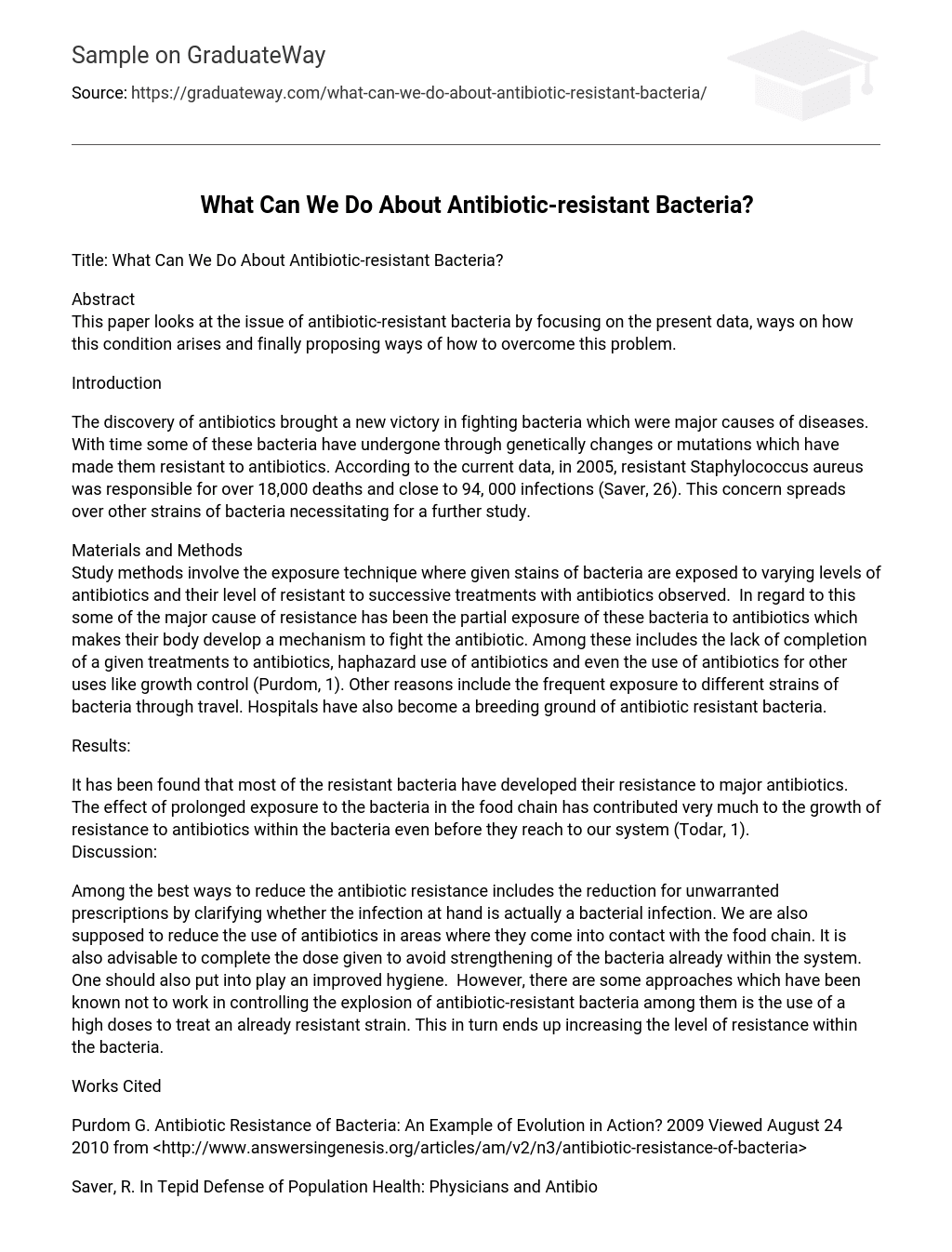Abstract
This paper looks at the issue of antibiotic-resistant bacteria by focusing on the present data, ways on how this condition arises and finally proposing ways of how to overcome this problem.
Introduction
The discovery of antibiotics brought a new victory in fighting bacteria which were major causes of diseases. With time some of these bacteria have undergone through genetically changes or mutations which have made them resistant to antibiotics. According to the current data, in 2005, resistant Staphylococcus aureus was responsible for over 18,000 deaths and close to 94, 000 infections (Saver, 26). This concern spreads over other strains of bacteria necessitating for a further study.
Materials and Methods
Study methods involve the exposure technique where given stains of bacteria are exposed to varying levels of antibiotics and their level of resistant to successive treatments with antibiotics observed. In regard to this some of the major cause of resistance has been the partial exposure of these bacteria to antibiotics which makes their body develop a mechanism to fight the antibiotic.
Among these includes the lack of completion of a given treatments to antibiotics, haphazard use of antibiotics and even the use of antibiotics for other uses like growth control (Purdom, 1). Other reasons include the frequent exposure to different strains of bacteria through travel. Hospitals have also become a breeding ground of antibiotic resistant bacteria.
Results
It has been found that most of the resistant bacteria have developed their resistance to major antibiotics. The effect of prolonged exposure to the bacteria in the food chain has contributed very much to the growth of resistance to antibiotics within the bacteria even before they reach to our system (Todar, 1).
Discussion
Among the best ways to reduce the antibiotic resistance includes the reduction for unwarranted prescriptions by clarifying whether the infection at hand is actually a bacterial infection. We are also supposed to reduce the use of antibiotics in areas where they come into contact with the food chain. It is also advisable to complete the dose given to avoid strengthening of the bacteria already within the system. One should also put into play an improved hygiene.
However, there are some approaches which have been known not to work in controlling the explosion of antibiotic-resistant bacteria among them is the use of a high doses to treat an already resistant strain. This in turn ends up increasing the level of resistance within the bacteria.
Works Cited
- Purdom G. Antibiotic Resistance of Bacteria: An Example of Evolution in Action? 2009 Viewed August 24 2010 from <http://www.answersingenesis.org/articles/am/v2/n3/antibiotic-resistance-of-bacteria>
- Saver, R. In Tepid Defense of Population Health: Physicians and Antibiotic Resistance. American Journal of Law and Medicine. Vol. 34, p. 24-28, 2008
- Todar, K. Bacteria Resistant to Antibiotics. 2008. Viewed August 24 2010 from <http://www.textbookofbacteriology.net/resantimicrobial_2.html>





